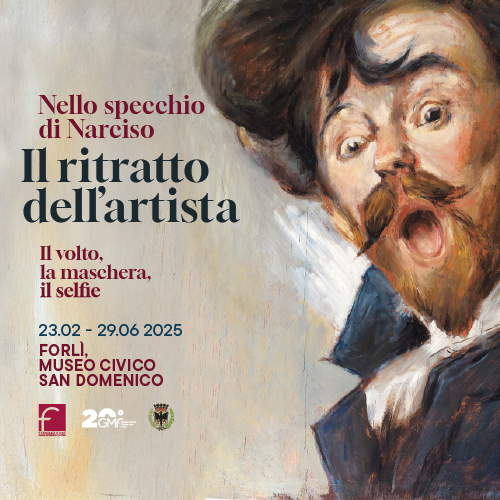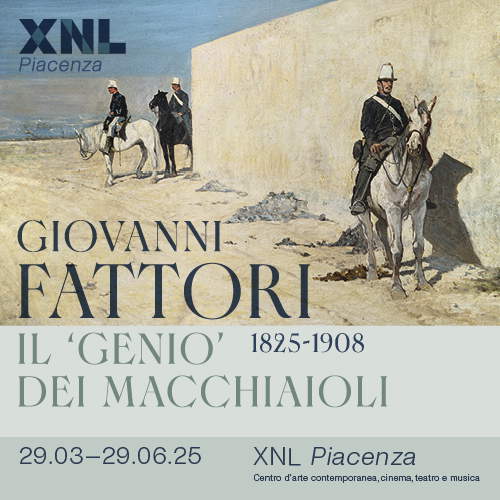
From the Apuan Alps to the Apennines, between the mountains of Massa-Carrara and Lunigiana
New installment of our journey through the provinces of Tuscany: for Massa-Carrara the key word to tell about the territory is: mountains. Mountains have always been the resource that has sustained the territory. Carrara and Massa lived and live around the marble that is quarried from their mountains, mountains characterize the territory of Lunigiana, Pontremoli itself has been for s
By Redazione | 02/04/2025 17:37
"All you have to do is climb the mountains, in Apuania, and the landscape itself lends itself to being a setting for visions. That then already the marble is a swarm of marine life, carbonate sediments produced in what were once coral reefs. Those layers, marked by oblique and parallel lines, veins under the skin that the millennial work of the quarries has uncovered and brought to the surface, shoving it in your face-those layers of marble are alive, deeply alive, and that whiteness that dazzles you is like a hypnotic concentrate of life. The sea, here, is already included in the mountain." These lines Marco Rovelli wrote in his book Il contro in testa perhaps alone would be enough to tell how the mountains have forged the minds and hearts of the inhabitants of today's province of Massa-Carrara. It is the mountains, majestic and silent, that are the soul of this land. The mountains that dominate Carrara, Massa, the entire Lunigiana. In the northernmost province of Tuscany, the Apuan Alps meet theTuscan-Emilian Apennines and create a symphony of landscapes ranging from rocky peaks to gentle slopes covered with forests. An element of the landscape, a presence rich with life, a symbol that encapsulates the history, stories, and culture of the province of Massa-Carrara.
The Apuan Alps present themselves as a collection of sharp peaks, rocky walls, and deep valleys that seem almost sculpted by an artist's hand. The marble of the Apuan Alps has shaped the history and economy of this land for millennia. Used since Roman times, Carrara marble has given birth to immortal masterpieces: just think of the works of Michelangelo. And even today, marble quarries are a fundamental element of local life, the soul of an industry that continues to look to the future without forgetting its roots. Then, past the ridges of the Apuan Alps, north of Carrara, we arrive in Lunigiana where the soft mountains of the Tuscan-Emilian Apennines rise up. Here the landscape changes radically: the rocky walls of the Apuane Mountains are replaced by gentle slopes covered with beech, chestnut and oak forests, interspersed with pastures and small villages perched on the peaks, clinging to the mountain shores. The towns that dot the Apennines, such as Pontremoli, Fivizzano, and Zeri, retain an ancient charm of cobblestone streets, stone houses, and traditions that have been handed down from generation to generation. Mountain villages are small treasure chests of history and culture. Pontremoli, with its Piagnaro Castle, Museum of Stele Statues, and Baroque buildings that testify to the season of great wealth that the town experienced in the 17th century, is a place where the Etruscan and medieval past is intertwined with modern life. Fivizzano, the "Florence of Lunigiana," amazes with its elegant squares and Renaissance buildings that conceal traces of the past that linked the town to the Grand Duchy of Tuscany. Zeri, on the other hand, is an example of mountain authenticity, where life flows slowly and local traditions, such as cheese making, chestnut harvesting and sheep farming, are still alive. Here the mountains are not just a place to explore-it is a way of life. Life in the Apennines is marked by the rhythms of nature, and ancient farming traditions still survive to this day.




Mountains are a constant and inescapable presence for those who live on the Apuan coast and in Lunigiana. They influence the climate, economic activities, and even the rhythm of daily life. Their resources, such as the marble of the Apuan Alps or the chestnuts of the Apennines, have been the sustenance and wealth of this land for centuries; they have created a direct link between the mountains and the people who live here. Life in the mountains has never been easy: the harsh climate, steep terrain and communication difficulties have required an extraordinary ability to adapt. This same strength is reflected in the tenacity and proud character of the local communities. The mountainous lands of Lunigiana and the Apuan Alps have also preserved their cultural and gastronomic traditions, insulating them from the sudden changes brought by modernity. Ancient customs manage to survive here thanks to the link with this mountainous landscape that protects them and keeps them alive. And for many local communities, mountains are also places of sacredness. Mount Sagro, for example, was already revered by the ancient Ligurians as a mystical place. Even today, mountains are seen not only as a physical place, but as a space in which man can approach the transcendent, finding peace and connection with something greater than himself.
The history of Italy can be said to have passed between the Apuan Alps and Lunigiana: the position of the Apuan and Lunigiana mountains made this territory a borderland, a crossroads of peoples and cultures, but also a strategic communication route for many centuries. During Roman times, the territory was the boundary between Regio VII Etruria and Regio IX Liguria, a separation not only geographical but also cultural. The Apuo-Lunense mountains then formed a natural line of defense: throughout history, they were exploited as a natural defense against invasions and attacks, serving as a bulwark to protect the local populations. In medieval times, the routes through Lunigiana were traversed by travelers, pilgrims, merchants, and soldiers who used these paths to cross from northern Italy to Rome and vice versa. Mountain passes, such as the Cisa Pass, were crucial for crossing the barrier of the Apennines. From here then passed the salt routes used to transport the precious mineral from the Ligurian Sea northward to the Po Valley and the cities of Emilia and beyond.
The border position then made large parts of the territory of today's province of Massa-Carrara a contested land between different political entities, from the Lombards to the dukes of Lucca, from the Malaspina to the Medici. The crossroads position of these areas enriched the territory, but also made its inhabitants proud, proud, arch defenders of their culture, often closed and distrustful, but always nevertheless attached to their lands. And even today, the Apuo-Lunense landscape, dotted with castles and fortifications (from Piagnaro Castle in Pontremoli to Malaspina Castle in Massa, from Brunella Fortress in Aulla to Castruccio's Tower in Avenza di Carrara, not to mention the many castles in Lunigiana: Fosdinovo, Terrarossa, Malgrate, Castiglione del Terziere, Tresana and many, many others), built to control the passes and defend the territory, testifies to the strategic role of the entire area in the past. Massa-Carrara's strategic position made this land a protagonist of encounters and clashes, transforming it into a place of cultural and historical richness. Today, the mountain passes and villages of the province tell this story of passages, encounters and resistance, speaking to visitors who want to discover an area where the mountains are not just a barrier, but a bridge between the past and the future.
The mountains of Massa-Carrara are then deeply linked to the art and culture of this province, so much so that they themselves become muses and material for immortal masterpieces. This bond is reflected in various places, museums, palaces and churches in the area, where marble, traditions and mountain landscapes become protagonists. From the Carrara Marble Museum, which celebrates the importance of Apuan marble in art and culture (here it is possible to discover how marble has been extracted from the mountains and transformed into works of art since theRoman times, with displays of archaeological finds, work tools and models that testify to the inseparable link between the mountains and Carrara's artistic tradition) to the quarries themselves, where you can visit the places where the mountains are "carved out" and understand how their material has become sculptures, buildings and monuments all over the world. And then, the places scattered throughout the territory that offer living evidence of this link: the Carrara Cathedral, for example, is one of the finest examples of the link between mountain marble and sacred art. The façade is built entirely of Apuan marble, while inside one can admire marble works with which one can admire the beauty and purity of the material. In Massa, the Ducal Palace, which was the residence of the Cybo-Malaspina family, lords of these lands, Apuan marble was used to decorate interiors and exteriors, showing how the material of the mountains influenced the art and architecture of the Renaissance and Baroque periods.









Going up to Pontremoli, we visit the Museum of the Stele Statues, which preserves the stele statues, mysterious prehistoric stone sculptures carved by the first inhabitants of the mountains: these anthropomorphic figures testify to a spiritual and artistic connection with the mountain landscape that goes back millennia. And then Fivizzano, a village rich in art and culture, where local stones were used, as in all the villages and castles of Lunigiana, to shape the land. This link between mountains and art is still alive: in the center of Carrara, the Padula Park hosts contemporary artworks that dialogue with the landscape, marble sculptures displayed in a natural setting to remind us of the inseparable relationship between art and nature that these lands have always experienced as part of themselves. In every corner of the province of Massa-Carrara, from monumental quarries to medieval villages, art and mountains are intertwined in an eternal dialogue, offering anyone who comes here the opportunity to discover how nature can become art and how art can give voice to nature.
The mountains here are not just an element of the landscape, but a symbol of resilience and identity for the communities that live at their foot. For centuries, these mountains have been a physical and cultural barrier, but also a source of inspiration and protection. During World War II, the mountains of Massa-Carrara were the scene of dramatic events: the Gothic Line ran through these lands, and what happened on these mountains left deep scars behind, but not only that: in this land the history of the Resistance was made, with courage. And even today the paths of the mountains tell stories of freedom, keeping the memory of those difficult days alive.
And it should not be forgotten that the mountains of Massa-Carrara have always inspired artists, poets and writers. Their imposing forms and changing landscapes have been celebrated in works of art and literature, and they continue to be a source of inspiration for anyone who visits them. In particular, the Apuan Alps have inspired poets such as Gabriele D'Annunzio, who celebrated their beauty in his works. "Marmoreal crown of threatening points, the great Apuan Alps reign bitter, from their pride assumed": this is one of the many verses about the Apuan Alps that can be found inAlcyone. But mountains do not only inspire artists: for those who live in these lands, they represent a deep connection with their history, their culture, a connection with nature and a call to simplicity and authenticity. They are the soul of this territory, the symbol of a thousand-year history and a culture rooted in nature.




